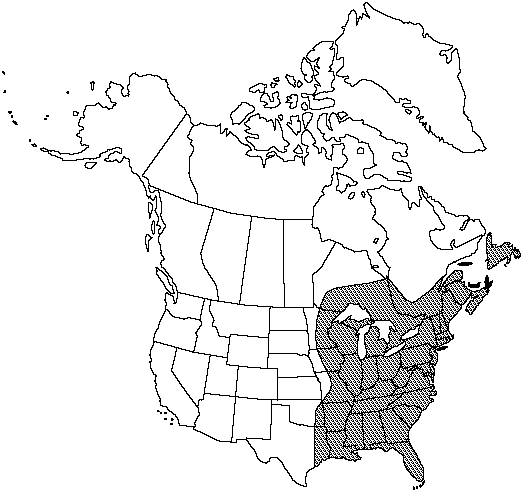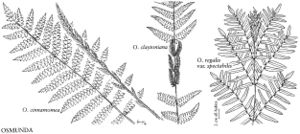Osmunda regalis var. spectabilis
Manual ed. 2 600. 1856.
Leaves 2-pinnate; petioles ± length of blades, winged, with light-brown hairs, glabrate at maturity. Sterile leaves broadly ovate, ca. 0.75–1 m; pinnae lanceolate, lacking tuft of hairs at base; pinnules short-stalked, base oblique to somewhat truncate, margins subentire to remotely dentate, apex acute to rounded. Fertile leaves with greatly reduced sporangia-bearing pinnae at apex. Sporangia greenish, turning red, then rusty brown. 2n =44.
Phenology: Sporulation early spring–midsummer.
Habitat: 0–2300 m
Distribution

St. Pierre and Miquelon, N.B., Nfld. and Labr. (Nfld.), N.S., Ont., P.E.I., Que., Ala., Ark., Conn., Del., Fla., Ga., Ill., Ind., Iowa, Ky., La., Maine, Md., Mass., Mich., Minn., Miss., Mo., N.H., N.J., N.Y., N.C., Ohio, Okla., Pa., R.I., S.C., Tenn., Tex., Vt., Va., W.Va., Wis.
Discussion
The chloroplasts within the spores give the young sporangia their green color. As the spores mature and are shed, the sporangia change color to a distinctive rusty brown.
Selected References
None.
Lower Taxa
"in" is not a number.
